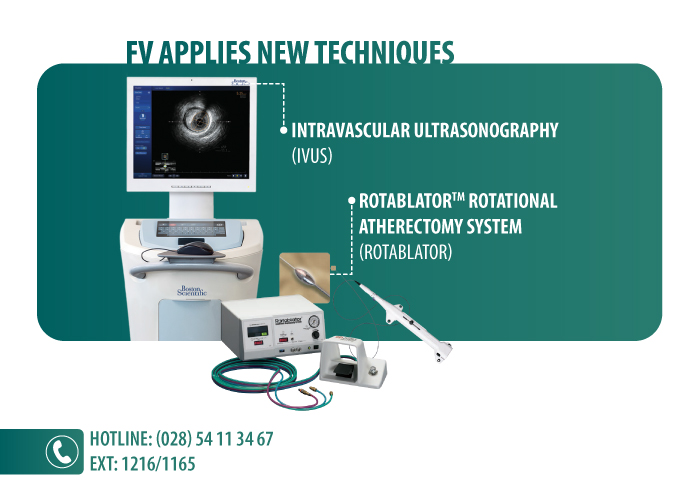To reduce the possibility of arteries re-narrowing after stent placement, and subsequently increase the success rate of cardiovascular intervention, in November 2018 FV Hospital started to apply two new techniques: Intravascular Ultrasound (IVUS) and the Rotablator™ Rotational Atherectomy System.

Intravascular ultrasonography (IVUS)
Intravascular ultrasonography (IVUS) is used in coronary artery intervention to determine the structural characteristics of atherosclerotic plaques and arterial size so that physicians know how best to perform the intervention and which device to select.
FV utilises a very small 60 MHz ultrasound probe, which is inserted into coronary arteries and through the injured site to produce HD-quality images so that doctors can assess the condition of the vascular system. This is a new yet safe method with a high rate of precision that can be performed repeatedly in assessing coronary artery structure and associated pathologies, as well as changes in the vascular system, pre- and post-intervention. For chronic obstructive pulmonary disease, doctors can use IVUS to find the right vein and increase the possibility of successful treatment.
The application of IVUS has many benefits for patients, such as optimising the results of angioplasty, facilitating a more accurate assessment of lesions, and reducing thrombotic complications in the stent. IVUS helps physicians to identify the appropriate treatments for patients, helps to reduce the rate of recurrence after intervention and reduces mortality from coronary artery disease. All of these benefits contribute to reducing the long-term cost of treatment for patients.
Rotablator™ Rotational Atherectomy System
In addition to IVUS, FV Hospital is also equipped with a Rotablator, a highly advanced technology which uses diamond drills from 1 mm to 2.5 mm in size to break up calcified plaques through which the conventional ball cannot pass to dilate the coronary arteries. The drill is inserted into the artery via a small conductor and rotated at a very high speed to puncture calcified plaques.
For more details, please call: (028) 5411 3467 – Ext: 1216/1165



